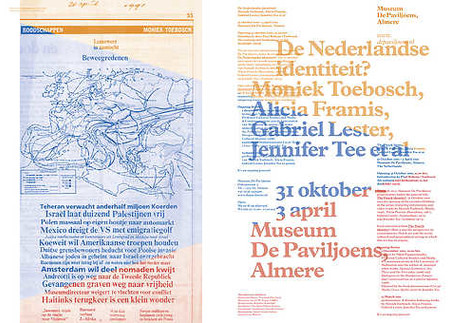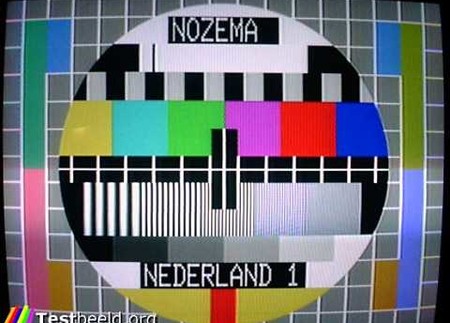What is it that makes Dutch art Dutch? In 1984 Edy de Wilde, former director of the Stedelijk Museum in Amsterdam, said in an interview that is included in the publication ‘De Nederlandse identiteit in de kunst na 1945’ (‘The Dutch identity in art after 1945’) ://A general characteristic of the Dutch culture is the tremendous openness. […]The Netherlands has always been open to external influences. That’s no big surprise: the location on the sea, the spirit of commerce that isn’t afraid to get into contact with foreign cultures. They made it possible for a fresh breeze to blow in the Netherlands, too. Luckily, we don’t focus that much on the inbreeding of our own ideas and thoughts. We’re open to foreign currents, but also process these in our own way. In art they then take an unmistakable form.//
The question of identity – “There’s no such thing as the Dutchman” princess Máxima mentioned in 2007 at the presentation of a report by the Scientific Council for Governmental Policy (WRR) on the national identity – has become a hot topic in the last few years. Dutch society has become more aware of the differences between cultural backgrounds and traditions, and these differences are reflected in the formation of public opinion. As a result, there is a shift in the historically developed national identity (or: one’s self-image) and the relationships between this country’s various nationalities .
In view of the current socio-political Holland, in the year 2009, De Wilde’s argument sounds familiar but no longer typically Dutch: […] how open and interested Holland is with regard to external influences and the immense effect that this has on the Dutch art.
Thus, the time has come to take a close look again at Dutch art history: to what extent do we still reflect about Dutch art the way that De Wilde did? Is there something like a ‘Dutch identity’ that can be traced within Dutch art? To what extent are social and geographical themes such as immigration, the founding of new towns or the changing landscape reflected in the Dutch art history? To what extent do the Dutch media influence the collective memory and (how) is this expressed in the art? To what extent can we make an attempt in the here and now to introduce themes that may have been overlooked or to add alternative, parallel lines of history to the chronological historiography of the Dutch art history?
The Dutch Identity? is a research project of Museum De Paviljoens featuring exhibitions and activities on the resounding of a ‘Dutch identity’ in the history of the Dutch art from 1960 up until now. Starting with the exhibition Nonlinear Editing (2002), Museum De Paviljoens has spotlighted the Dutch identity in a series of themed exhibitions, lectures and publications on Dutch art since 1960. In the coming four years this research will be intensified in a specific programme that in 2011-2012 will result in a major final exhibition and a handbook revealing the results of this investigation.
Taking an interdisciplinary approach, the museum enters into collaborations with universities, secondary schools, cultural institutions and museums in order to create a publication entitled The Dutch Identity?: fifty years of Dutch art history for sixth form students and first-year students at schools for higher vocational education and universities. The publication is meant to be a new handbook for the contemporary Dutch art history and wants to do justice to the dynamic development of art and culture within Dutch society during the past decades. This publication will be available as of September 2011.
Do you have suggestions for Museum De Paviljoens or do you want to join discussions on ‘The Dutch Identity?’, then please register your profile at www.depaviljoens.nl including (a.o.) the keyword ‘identity’ and share articles, information and communications surrounding this theme with others.

